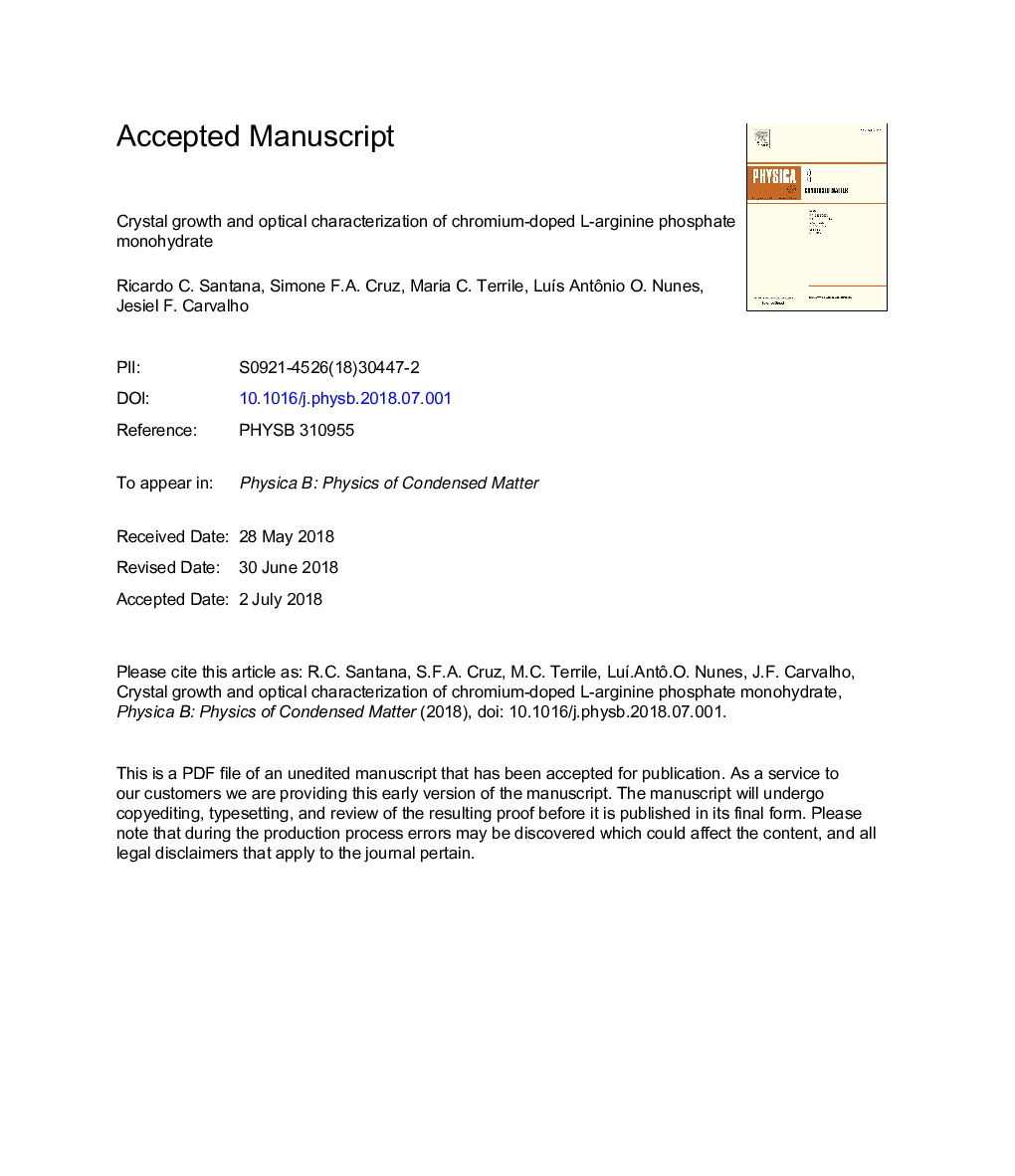| Article ID | Journal | Published Year | Pages | File Type |
|---|---|---|---|---|
| 8160367 | Physica B: Condensed Matter | 2018 | 22 Pages |
Abstract
l-arginine phosphate monohydrate single crystals doped with Cr3+ ions (LAP:Cr) were grown by slow cooling method, with dimensions up to 10â¯Ãâ¯10â¯Ãâ¯8 mm3. Chromium ions induce a drastic reduction of overall growth rate and produce a drastic change in LAP growth morphology. The functional groups of LAP:Cr crystals were confirmed by FTIR analysis and compared with pure LAP. The optical band gap of LAP:Cr was determined from UV-VIS-NIR transmittance spectrum. Optical absorption spectrum at room temperature and 10â¯K was measured consisting of two large bands due to the 4A2 â 4T2 and 4A2 â 4T1 transitions and a narrower band attributed to the 4A2 â 2E spin-forbidden transition, characteristic of Cr3+ ions. Luminescence spectra of pure and Cr3+-doped samples were collected with excitation at wavelength of 350â¯nm and 335â¯nm. Emissions from host LAP matrix and Cr3+ ions were observed. Excited with 350â¯nm the spectra reveal a broad intense band from 21000 to 26000â¯cmâ1 region due to electronic transition from LAP ligand. The emission spectra of doped sample present two broad bands centered at 12346â¯cmâ1 and 13412â¯cmâ1 from 2E â 4A2 and 4T2 â 4A2 transitions, characteristics of luminescence from Cr3+ ions. From these results the Racah and crystal-field Cr3+ parameters were evaluated and comparing with those obtained in similar systems.
Related Topics
Physical Sciences and Engineering
Physics and Astronomy
Condensed Matter Physics
Authors
Ricardo C. Santana, Simone F.A. Cruz, Maria C. Terrile, LuÃs Antônio O. Nunes, Jesiel F. Carvalho,
